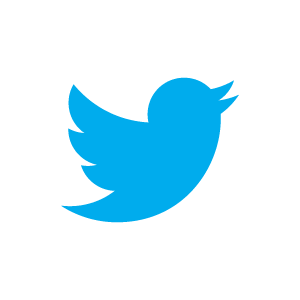

Right after security, controlling your brand is the biggest concern I get from companies interested in deploying APIs. They are worried about being able to control their brand and overall message portrayed by their potential developer community.
Branding guidelines and a robust image, button and UI gallery is something I encourage API owners to invest in from day one, because it’s easier to set the stage early on than trying to take control after the unicorns are running wild.
One example of this is the darling of the API industry, Twitter. Twitter has took further control of their brand today, with the release of #Twitterbird. As Twitter states:
Starting today you’ll begin to notice a simplified Twitter bird. From now on, this bird will be the universally recognizable symbol of Twitter. (Twitter is the bird, the bird is Twitter.) There’s no longer a need for text, bubbled typefaces, or a lowercase “t” to represent Twitter.
The #TwitterBird is the latest addition to the Twitter Trademark and Content Display Policy, where Twitter lays down the following branding guidelines for the Twitter ecosystem:
- Assortment of Twitter approved images
- Dos and Don'ts of using Twitter images
- How to use buttons to promote your Twitter account
- Use of Twitter brand in advertising and marketing materials
- Use of Twitter brand in merchandise and manufactured items
- Naming your applications, products and domains
- How to visually design your website
- What to do when your writing a book or publication about Twitter
- How to display Tweets and other Twitter content

We’ve come a long ways from 2008 and 2009 where logos, buttons, badges and other Twitter branding items were yet another area where Twitter depended on the Twitter ecosystem for support. The Twitter community created a wild assortment of assets to be used when integrating Twitter into your site or application.
Then starting in 2010 Twitter started pulling in the reigns and took more control of their brand with the release of a set of “refreshed...logos, buttons and widgets to bring the improved look and experience of the new Twitter to your website or blog”.
Over the next two years Twitter has continued to polish their brand, while also tightening the rules of how you can use Twitter and Tweets in your own sites and applications. While I totally understand Twitter’s need to get more control, my only criticism are:

- Four Years Late - They should have done this a long time ago. It took four years before they started doing anything in branding.
- Developers - They should have included the ecosystem in more of the planning as well as creating a layer that includes ecosystem apps in the equation
It’s easy for me to sit here in the future, telling Twitter what they should have done, when they were the pioneering API company. But I feel pretty strongly that many of the decisions in the last two years to gain control of their ecosystem, would have been better off started from the beginning, and also suffers from a severe shortage of ecosystem involvement.
While I can’t change Twitter’s approach to the Business of their APIs, I can help influence the next generation of APIs. Make sure you consider a healthy and complete branding resource center for your API, and consider how you can protect your brand while also empowering your developer ecosystem.
